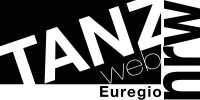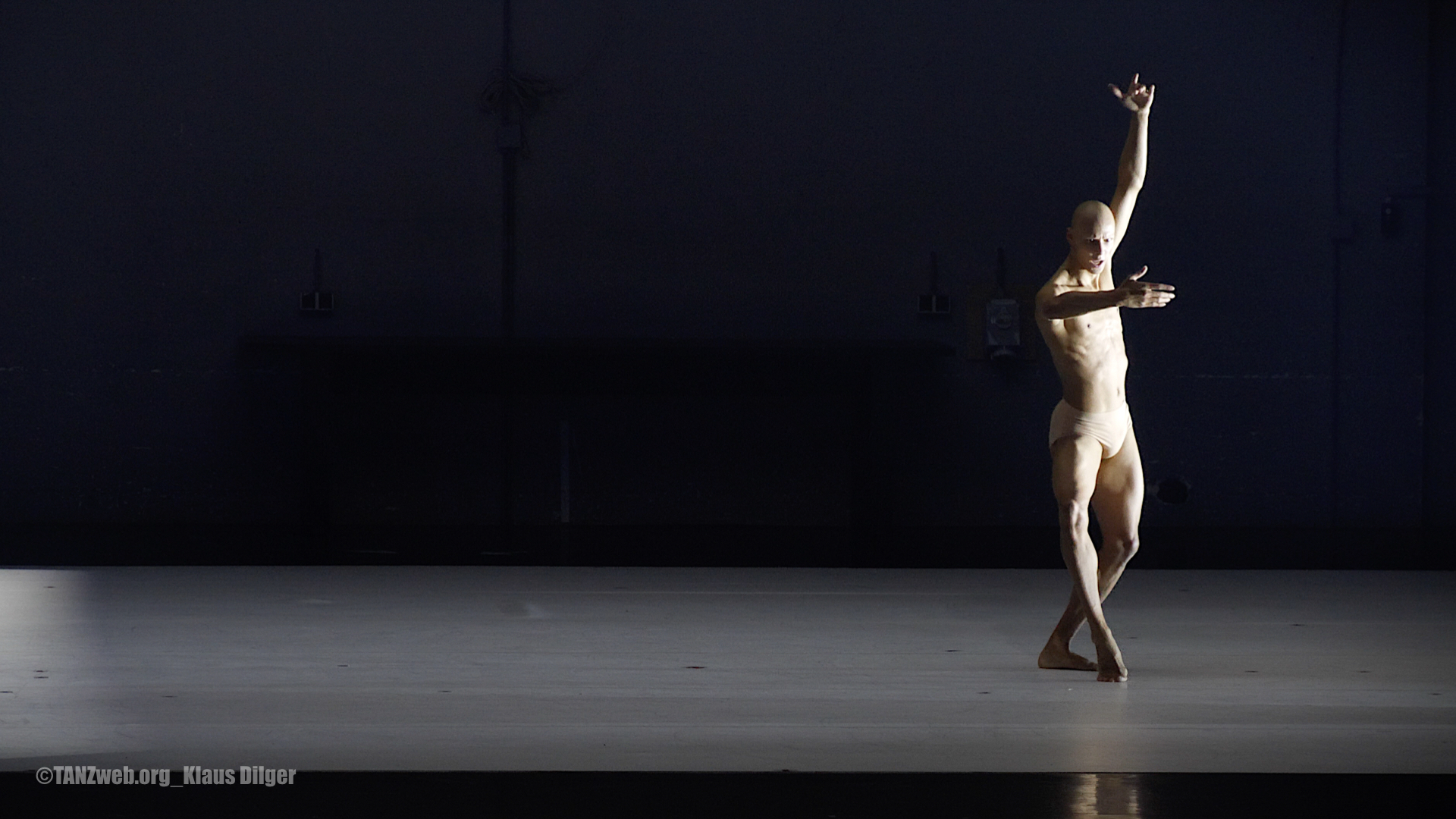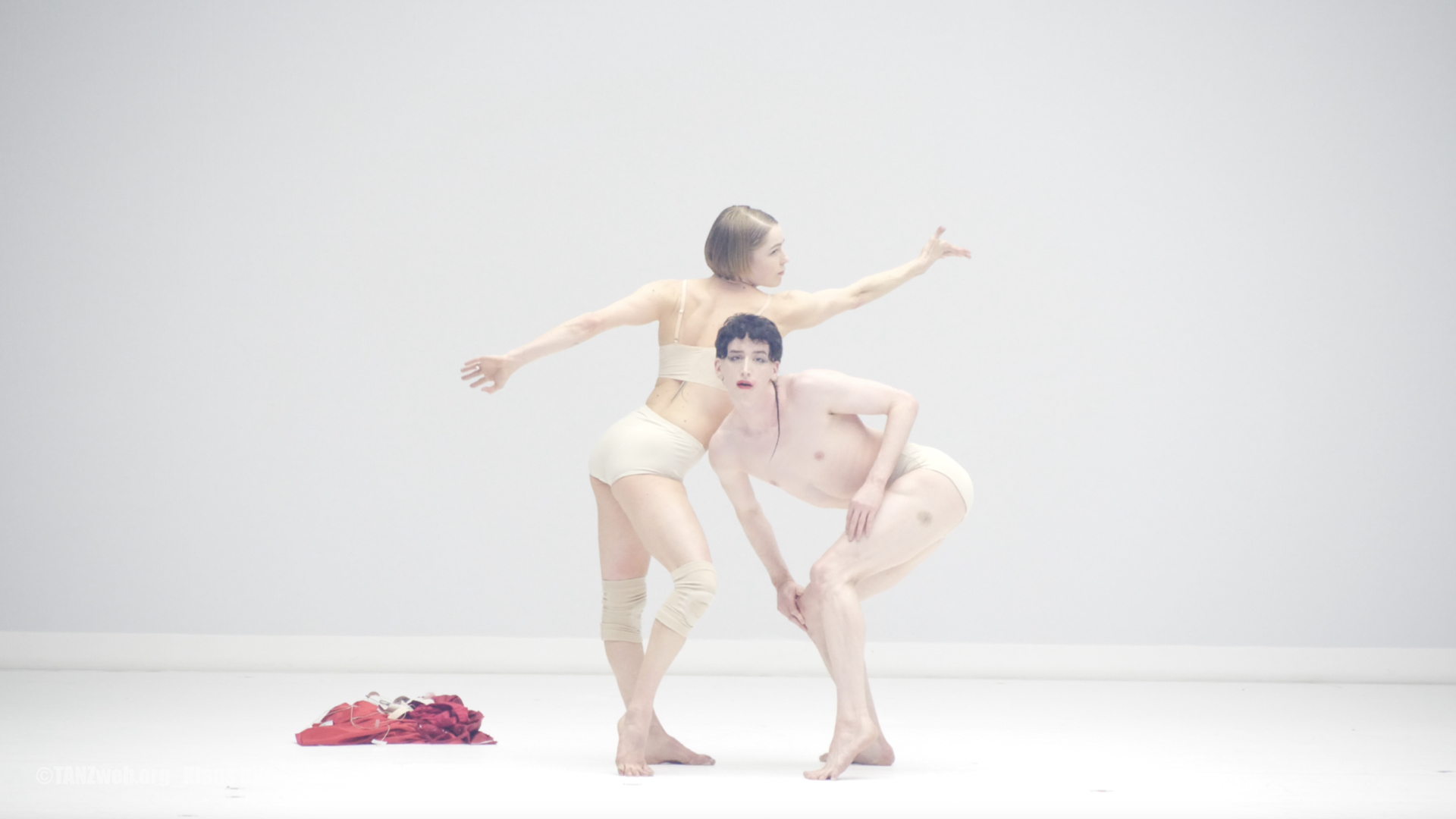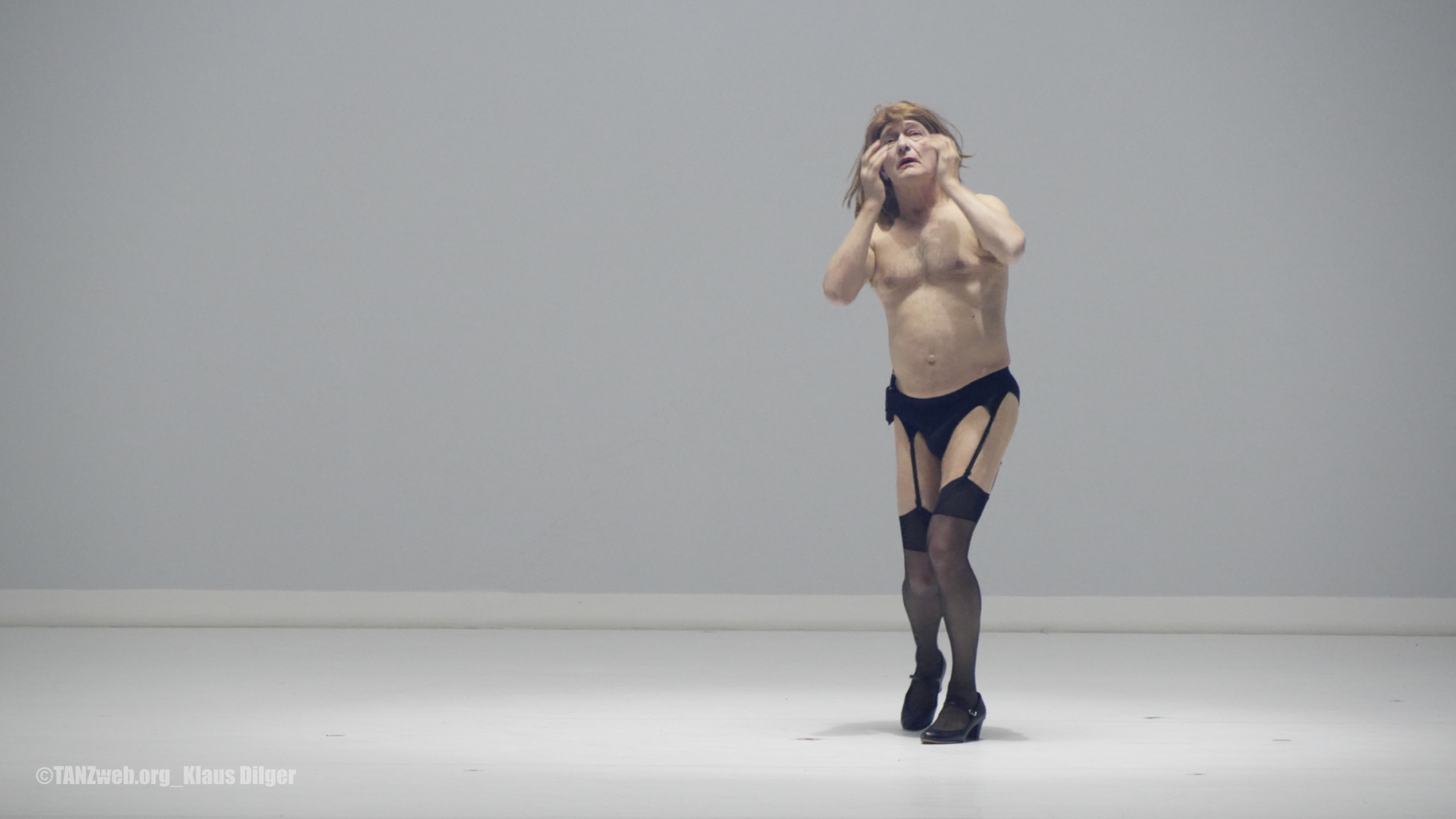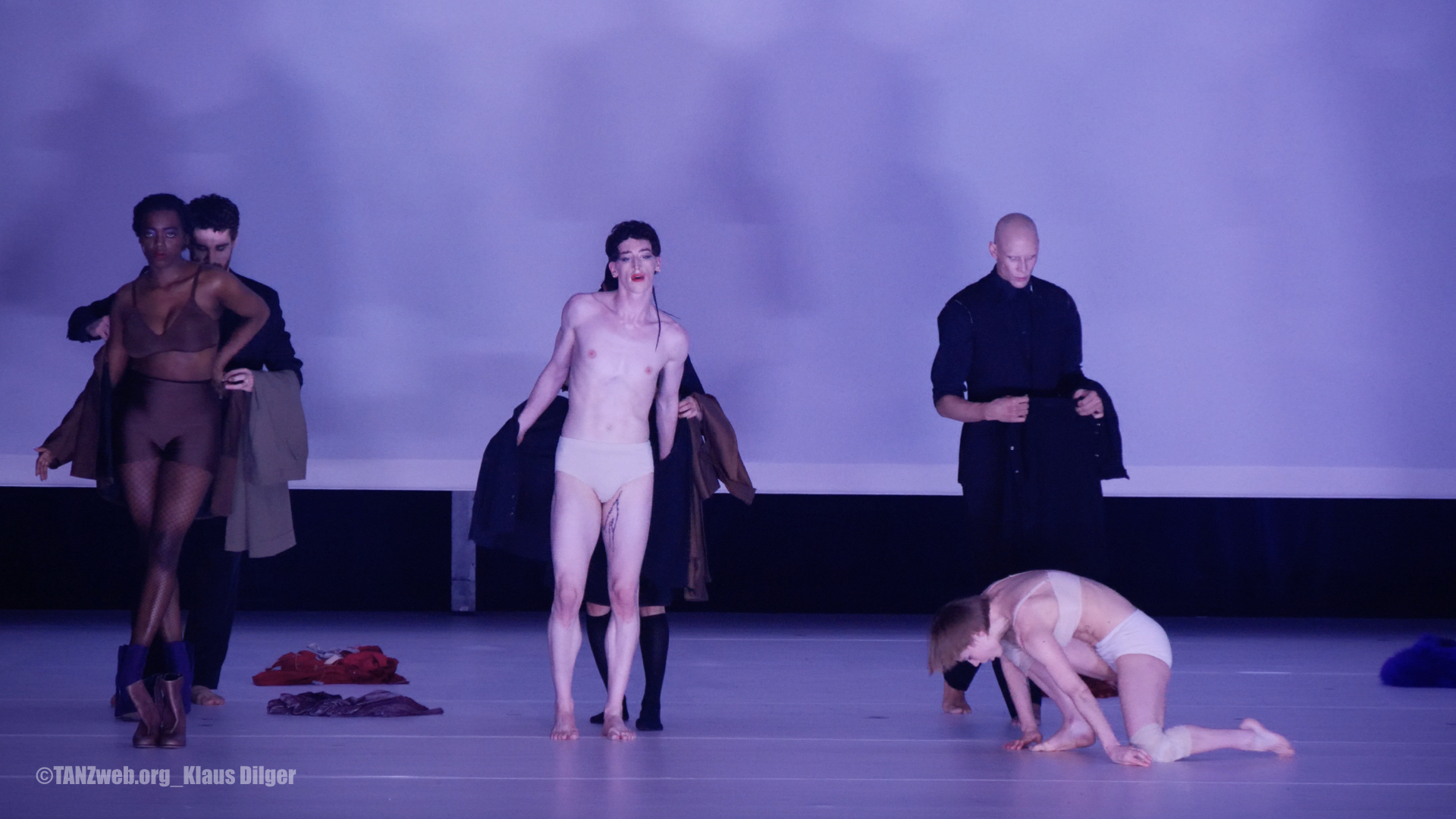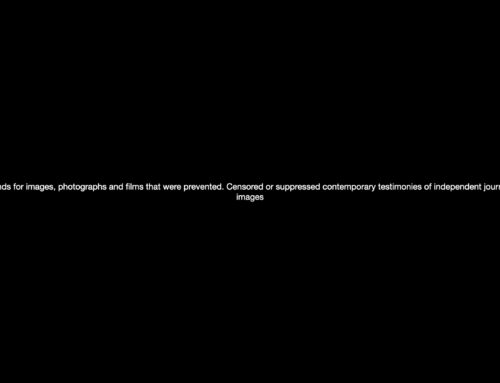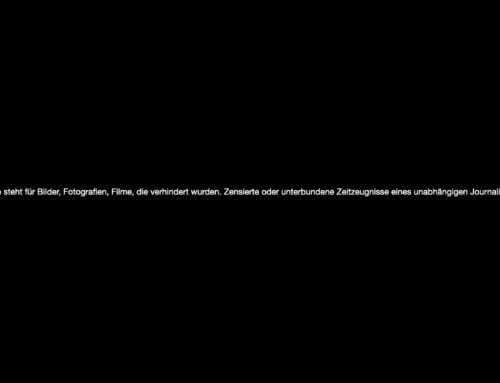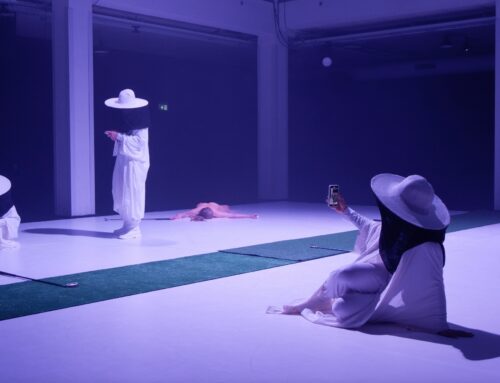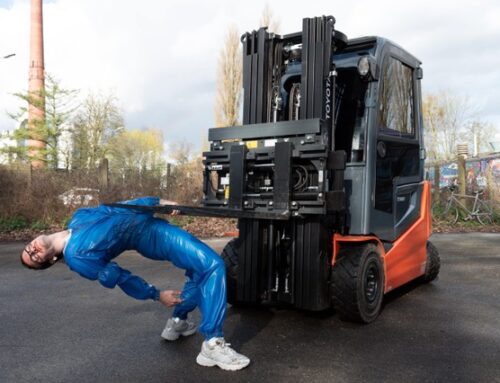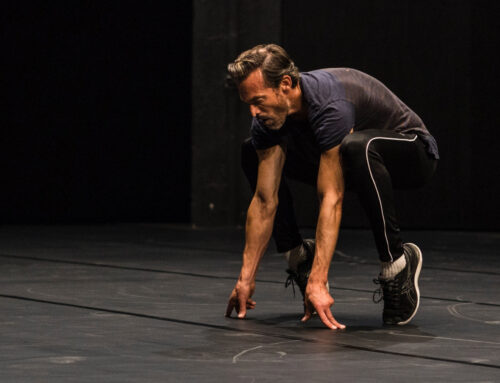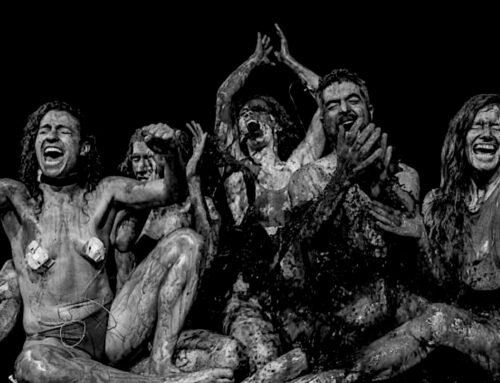…and there was no more light
Walking and falling, rising and resurrection
Imre and Marne van Opstal’s „VODOO WALTZ“ at the completely sold-out Parkstad Limburg Theatre in Heerlen is heavy fare at the start of the 29th edition of the Schrit_tmacher Festival – but brilliantly performed!
by Melanie Suchy
This year’s Schrittmacher Festival opens with a piece that combines dance with drama and is not designed to make you feel good. „Voodoo Waltz“ from Bochum ticks to a very unlovely beat. Because the production by Imre and Marne van Opstal tells a crazy story. Or no: what remembering and anticipating a bang might feel like.
The acclaimed premiere at Schauspielhaus Bochum was a month ago. It was the Dutch brother and sister van Opstal’s first directorial work with drama. Both were world-class dancers in the Nederlands Dans Theater (NDT) and the Batsheva Dance Company; they now choreograph as a duo. Their „I’m afraid I forgot your smile“, a sextet with choir created for the Hessisches Staatsballett, was nominated for the FAUST Prize in 2023. The dancer involved at the time, Ramon John, here on loan from the ballet in Wiesbaden/Darmstadt, performs „Voodoo Waltz“ with other dancers, former members of the NDT and actors from Bochum. An incantation.
Nine men and women and people who sometimes look like this and sometimes look like that. This is one of the „fine lines“ that is labelled at the beginning as „I have crossed them“. At one time, even the then new waltz crossed the boundaries of so-called decency. This crossing over, also in the sense of changing, „transformation“, is presented by the actor Pierre Bokma in the opening scene: he is Orfan, he pretends to be a man or a woman, depending on the season, but never wanted an operation. The surname-less man is the central theme of the production, which is set in Amsterdam’s red light district. Sometimes he speaks, sometimes he watches from the side. Wears a suit and glasses, but mostly a pale pink undergarment, pumps and a wig dangling from his hand. In the intermediate stage.
Occasionally, Wilhelm aka the Bible reader Wilhelma, William Cooper, who also hints at a long-haired Jesus, as well as the lawyer Ivana, who is interested in lying faces, and Kinga Xtravaganza, madam of a brothel, both played by the actress Stacyian Jackson, also appear. Plus the six dancing creatures, between human and ghost. But Orfan, a sex worker by profession, stays and goes to the end. The supposed or self-declared orphan takes revenge or gets rid of his past, as he calls it. Takes someone from life to death, across the border. While the biblical quotation speaks of Jesus‘ resurrection. Fathers as a problem. The origin. Faith.
Body and mind
English and German. The production loosely mixes the languages. The quotes from the New Testament are recited by a disembodied Siri voice, passages that admonish and promise. One tells of a child with an epileptic fit. Jesus heals it. What epilepsy is all about and what it triggers in the brain and body is less important here on stage than in the text on which the play is based, although knowing it helps us to understand what is happening. Only the marvellously loud confusion of a late scene alludes to the extremely heightened sensory perceptions of seizures. There are also two circles of light, which at times appear like suns in the stage sky. In addition, the red light could simply be a metaphor for the stimulus, irritability and excitability of the brain where the body is stuck.
Poetry hijacks medicine
„Voodoo Waltz. For Epileptics“ by Slovenian author Janja Rakuš, published in English in 2014, reads like a poetic attempt to keep such painful explosions in check and at the same time honour them like revelations. To fray and connect without limits. With sense and understanding and hallucinations. Beginning with that Orfan monologue, the forward-tapping and propulsive text is a succession of passages, fragmented stories, lightning-short sentences, words, „click, click“, repetitions, quotations, YouTube links, references to corruption scandals in Slovenia and much about Vincent van Gogh, Arthur Rimbaud, Fyodor Dostoyevsky and epilepsy medication. Rakuš wrote it after a hike on the Way of St James, and walking, „right, left“, and a „3, 2, 1“ drive the waltz of words. Epilepsy is a constant companion, as a diagnosis, reminder, anxiety trigger, as what connects the four main characters. Rakuš thus entangles body and mind, which Christianity separated ominously.
Powerlessness
While these characters talk for two tireless hours on the sparsely furnished stage, mostly about themselves, sitting, lying, putting on make-up, walking, leaving, appearing, the dancers are quietly at their side or take over the stage or assume roles themselves. For example, that of the boorishly babbling taxi driver: Boston Gallacher, his face still covered in lipstick, his knees open in a clichéd male fashion. Sometimes all nine of them dance, step right, left, together, a little show. Or pose as if for nice group photos, straddling each other.
Uncanny
The Opstals do not degrade dance to a pretty accessory or symbolist ghosting. But sometimes it almost tips over. When these class dancers elegantly and fleet-footedly build all kinds of straight lines, when their arms rotate, when a man constantly lifts the smaller woman, supports her, pulls her by the hand or hip, then the madness is far-reaching. What they perform here, so unbroken and undisturbed, also symbolises the connection between body and mind. Or does it?
„Beauty of life“ is written in the lyrics. Only actress Stacyian Jackson radiates sexiness, arching her body in her furious Kinga solo, complete with a Caribbean Creole flavour in her speech. The dancers‘ bodies celebrate the delicate, light, almost unfleshy when they curl around each other in duets and stretch their legs into the air. God and gods, goddesses: The people on stage try to transcend the earthly, to climb peaks, but they can’t get out of themselves down there in the plain, the Netherlands or the neighbourhood with the red light.
Demon
The dancer Ramon John looks like an avatar when he is standing, scantily clad, with his long limbs and rather broad bony shoulders. An ideal, an unreal one, who later folds, bends and stretches on the floor and endeavours to wriggle out of this flat existence. He doesn’t seem to trust appearances. This look behind or beneath the ordinary is what makes „Voodoo Waltz“ so special.
The many or huge dimensions in which Rakuš’s text wanders and climbs are dampened by the stage production, which Tom Visser sensitively illuminates in bright and sometimes garish red and Amos Ben-Tal underpins with guitar and techno sounds. This makes the action more comprehensible, but also more well-behaved, taking away some of the high air and craziness.
In the beginning was the word. And so the lyrics end:
